Our primary goal is to understand how the Solar System and Earth formed and evolved, and how life began and developed. This presents a major unsolved chemical, physics, and astronomical problem that will yield to a focused attack given the timely combination of emerging laboratory techniques, theory, and observations. Here, chemistry defined as the change of matter must be considered as the major driving force to control the chemical evolution of matter on the microscopic level (elementary mechanisms of chemical reaction) and also on the macroscopic scale (planets, moons, asteroids, comets, and Kuiper Belt Objects (KBOs)). Since the present composition of each Solar System body reflects the matter from which it was formed and the processes which have changed the chemical nature since the origin, a detailed investigation of the reaction mechanisms altering the chemical composition of the pristine environment is of paramount importance to rationalize the contemporary chemical make-up. Here, laboratory experiments simulating the interaction of ionizing radiation (electrons, nuclei, photons) from the solar wind, cosmic radiation field, and planetary magnetospheres with low temperature solids in our Solar System (ices, minerals, carbonaceous matter) offer extraordinary opportunities for understanding the origin and chemical evolution of the Solar System and how life emerged and developed for several reasons:
1. Due to activation energies (entrance barriers) of chemical reactions and diffusion barriers of atoms, radicals, and molecules on the surfaces and inside Solar System ices, classical chemical reactions are effectively eliminated at low temperature. Therefore, the interaction of ionizing radiation with icy surfaces and bulk ices like water, methane, ammonia, carbon monoxide, carbon dioxide, nitrogen, hydrogen sulfide, sulfur dioxide is imperative to couple the energy of the radiation inside the ices and to synthesize new molecules via non-thermal, non-equilibrium chemistry.
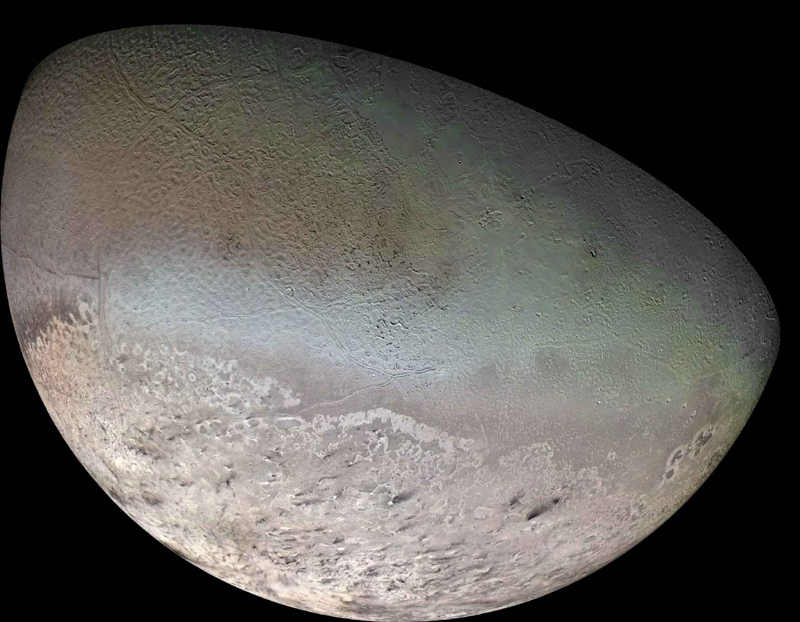
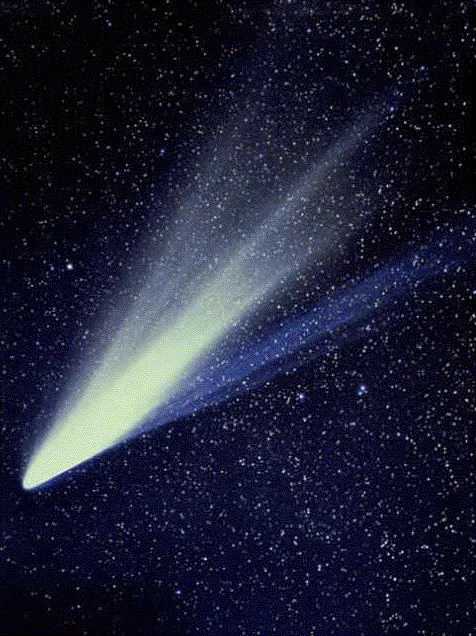
2. Utilizing Solar System bodies like planets, their moons, comets, and Kuiper Belt Objects (KBOs) as natural laboratories at the frozen stage, we can compare the chemical nature of the newly formed molecules in laboratory experiments with the contemporary chemical composition of the diverse Solar System bodies as obtained from astronomical observations and space missions. Once these underlying chemical processes and reaction mechanisms have been unraveled, we can identify those molecules which belonged to the nascent Solar System body distinguish molecular species synthesized in a later stage, and predict the imminent chemical evolution of our Solar System. This also yields valuable clues how proto-Earth may have developed chemically billions of years ago. By selecting distinct ice mixtures, temperatures, and radiation sources, we can mimic for the first time in history the chemical processing of any body in our Solar System.
3. Since molecules in simple, low temperature ices can also act as precursors to biologically important species like sugars, amino acids, and phosphates, the laboratory experiments can also be utilized to develop key-concepts how and where in our Solar System astrobiologically important molecules might have been formed. Most importantly, the studies will also provide crucial information how these astrobiologically important molecules might have survived the strong ionizing radiation from the solar wind and planetary magnetospheres. Recall that due to the absence of ozone, one of the crucial requirements for the evolution of life as we know it, biologically important molecules can be destroyed easily by the strong UV radiation field. However, embedded inside ices, the bulk ice matrix will protect these biologically important molecules from the destructive UV radiation field. Further, our experiments can also assist to rationalize how and to what extent ozone can be formed via abiotic processes inside Solar System ices.
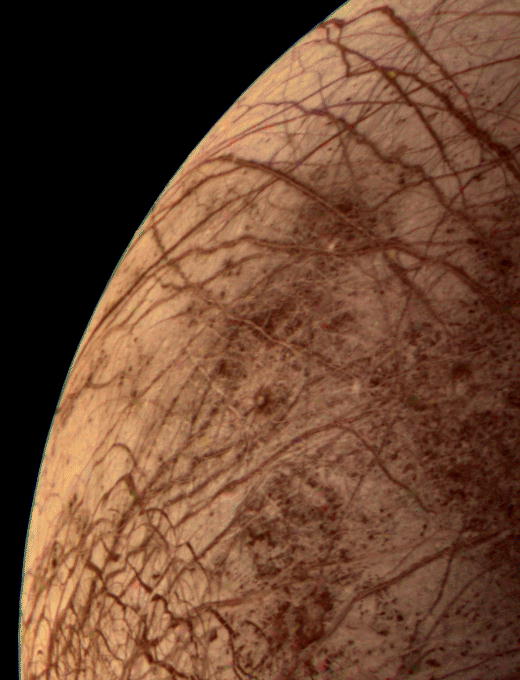
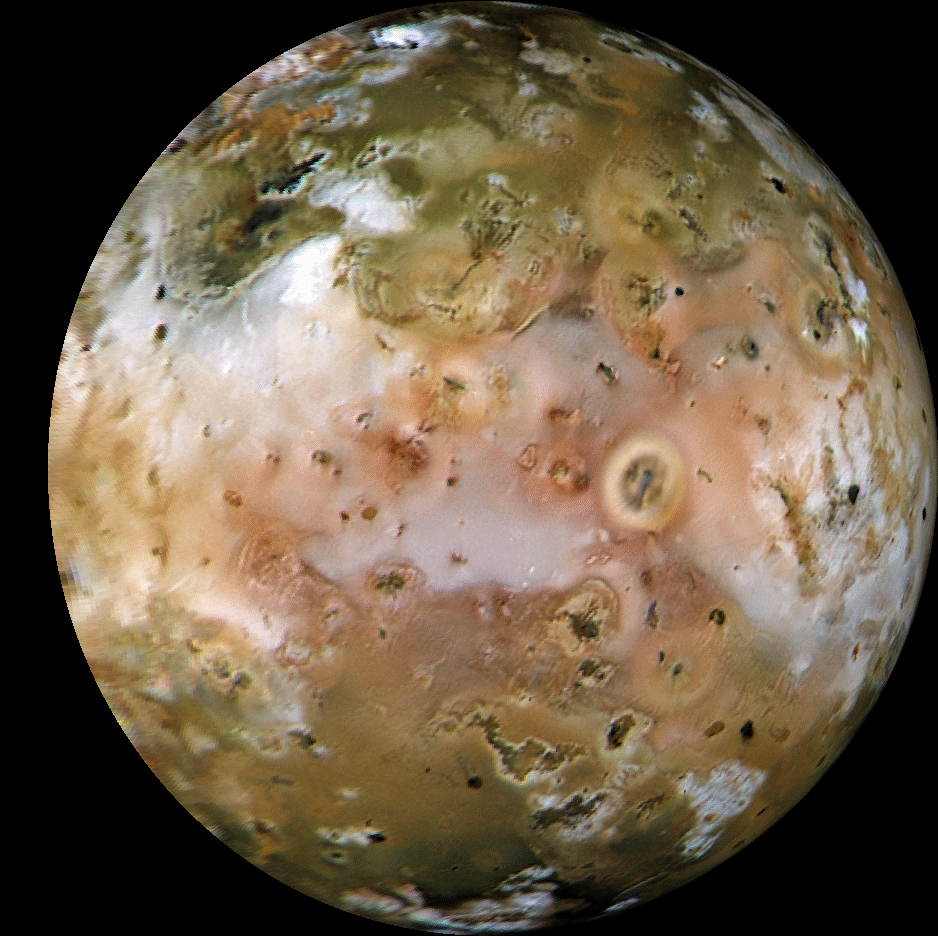
4. Chemists have known for a long time that chemical processes produce isotopic fractionations in hydrogen, carbon, nitrogen, oxygen via chemical reactions predominantly to differences in zero-point energies of the products and in some cases to a shift from an exo- to an endoergic reaction once the heavier isotopes are placed in the reactant molecules. Therefore, by investigating the radiation-induced isotopic enrichment in Solar System ices containing oxygen, carbon, nitrogen, and hydrogen, these studies will also shed light on isotope enrichment processes of H/D,14N/15N,12C/13C, and16O/17O/18O at an early stage of our Solar System. Similar processes will be studied to simulate the radiation-induced isotopic fractionation in minerals (Mars, asteroids). These studies can be compared directly with samples returned in future space missions, for instance, from Mars.
5. By investigating the effects of charged particles and photons on the chemical composition and spectroscopic properties (infrared, optical) of minerals (silicates, carbonates, sulfates) and carbonaceous compounds, the new laboratory can also provide valuable data on space weathering effects. By comparing the laboratory spectra with those data obtained from observations on Mauna Kea (Keck I/II), we can ultimately determine the exposure age of asteroids since their formation. These studies can be also expanded to Solar System ices. By obtaining data on the amorphization rate of crystalline ices, such as of crystalline water observed on KBOs, by ionizing radiation in our Solar System, we can provide quantitative data on the exposure ages of distinct ice surfaces.
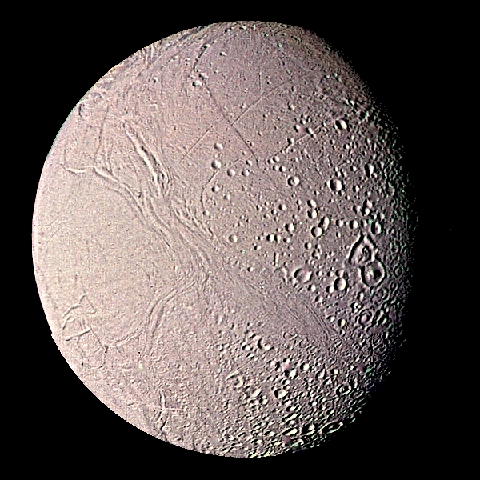
In our laboratory, we investigate the interaction of energetic particles (electrons, atomic and molecular ions, photons, neutral atoms) with low temperature ice surfaces. These ices are either neat like water, methane, ammonia, carbon monoxide, carbon dioxide, nitrogen, oxygen or complex mixtures. By inducing non-equilibrium chemistry, we can follow the reaction in real time via infrared spectroscopy and mass spectrometry. The information obtained are data on reaction products, their formation rates, and information on the kinetics and dynamics. These findings can be utilized to better understand the chemistry of interstellar grains and the astrobiological evolution of our Solar System.
Recent Selected Publications
1. R.I. Kaiser, Chemische Prozesse durch Zyklotronionen in festem Methan - Simulation der Wechselwirkung kosmischer Strahlung mit einfachen extraterrestrischen Eiskoerpern, Report-Juel-2492, 130pp (1991).
2. R.I. Kaiser, R.M. Mahfouz, K. Roessler, Emission of organic products from the surface of frozen methane under MeV ion irradiation, Nucl. Instr. Meth. B 65, 468-471 (1992). (PDF)
3. R.I. Kaiser, J. Lauterwein, P. Mueller, K. Roessler, Energy density effects in the formation of organic residues in frozen methane by MeV ions, Nucl. Instr. Meth. B 65, 463-467 (1992). (PDF)
4. R.M. Mahfouz, M. Sauer, S.T. Atwa, R.I. Kaiser, K. Roessler, Interaction of MeV ions and VUV photons with polymers and high molecular hydrocarbons, Nucl. Instr. Meth. B 65, 447-451 (1992). (PDF)
5. R.I. Kaiser, K. Roessler, Cosmic ray modification of organic cometary matter as simulated by cyclotron irradiation, Ann. Geophys. 10, 222-225 (1992).
6. R.I. Kaiser, K. Roessler, Modification of primordial ices by cosmic rays as simulated by cyclotron irradiation in: Asteroids, Comets, Meteors, A.W. Harris, E. Bowell eds., LPI, Houston, 293-295 (1993).
7. K. Roessler, R.I. Kaiser, E. Langenscheidt, Strahlenchemie von Koerpern des Sonnensystems in Laborsimulationen, in Proceedings 8. Kometenwerkstatt, K. Roessler, K. Thiel eds., Forschungszentrum Juelich GmbH, Juelich (1993), 127-137.
8. R.I. Kaiser, MeV-Ionen induzierte chemische Reaktionen in festem Methan, Ethen und Ethin. Theoretische und experimentelle Studien zur Wechselwirkung kosmischer Strahlung mit extraterrestrischen Eiskoerpern, Report-Juel-2856, 143 pp. (1993).
9. R.I. Kaiser, A. Gabrysch, K. Roessler, Cosmic ray simulator: A versatile apparatus for quantitative studies on the interaction of cosmic rays with frozen solids by on line and in situ quadrupole mass spectrometry and Fourier transform infrared spectroscopy, Rev. Sci. Instrum. 66, 3058-3066 (1995). (PDF)
10. R.I. Kaiser, P. Jansen, K. Petersen, K. Roessler, On line and in situ quantification of gas mixtures by matrix interval algebra assisted quadrupole mass spectrometry, Rev. Sci. Instrum. 66, 5226-5231 (1995). (PDF)
11. R.I. Kaiser, K. Roessler, Theoretical and laboratory studies on the interaction of cosmic-ray particles with interstellar ices. I. Synthesis of polycyclic aromatic hydrocarbons by a cosmic-ray-induced multicenter mechanism, Ap. J. 475, 144-154 (1997). (PDF)
12. R.I. Kaiser, G. Eich, A. Gabrysch, K. Roessler, Theoretical and laboratory studies on the interaction of cosmic-ray particles with interstellar ices. II. Formation of atomic and molecular hydrogen in frozen organic molecules , Ap. J. 484, 487-498 (1997). (PDF)
13. C. Lecluse, F. Robert, R.I. Kaiser, K. Roessler, C.T. Pillinger, M. Javoy, Carbon isotopes of irradiated methane ices: implications for cometary 12C/13C ratio, Astronomy and Apics 330, 1175-1179 (1998). (PDF)
14. R.I. Kaiser, K. Roessler, Theoretical and laboratory studies on the interaction of cosmic-ray particles with interstellar ices. III. Suprathermal chemistry-induced formation of hydrocarbon molecules in solid methane (CH4), ethylene (C2H4), and acetylene (C2H2), Ap. J. 503, 959-975 (1998). (PDF)
15. R.I. Kaiser, G. Eich, A. Gabrysch, K. Roessler, The hydrogen peroxyde radical, HO2 - a potential tracer of interstellar molecular oxygen, Astron. Ap. 346, 340-344 (1999). (PDF)
16. R.J. Morton, R.I. Kaiser, Kinetics of suprathermal hydrogen atom reactions with saturated hydrides in planetary and satellite atmospheres, Planetary and Space Sciences, 51, 365-373 (2003). (PDF)
17. C.S. Jamieson, C.J. Bennett, A.M. Mebel, R.I. Kaiser, Investigating the mechanism for the formation of nitrous oxide (N2O (X1 Σ+)) in extraterrestrial ices, Ap. J. 624, 436-447 (2005). (PDF)
18. C.J. Bennett, C.S. Jamieson, Y. Osamura, R.I. Kaiser, A combined experimental and computational investigation on the synthesis of acetaldehyde (CH3CHO(X1A')) in interstellar ices, Ap. J. 624, 1097-1115 (2005). (PDF)
19. P.D. Holtom, C.J. Bennett, Y. Osamura, N.J. Mason, R.I. Kaiser, A Combined Experimental and Theoretical Study on the Formation of the Amino Acid Glycine (NH2CH2COOH) and its Isomer (CH3NHCOOH) in Extraterrestrial Ices, Ap.J. 626 940-952 (2005). (PDF)
20. X. Gu, Y. Guo, E. Kawamura, R.I. Kaiser, Design of a convection-cooled, cluster-based voltage divider chain for photomultiplier tubes, Rev. Sci. Instr. 76 083115-1-6 (2005). (PDF)
21. X. Gu, Y.Guo, R.I. Kaiser, Mass Spectrum of the Butadiynyl Radical (C4H; X2 Σ+), Int. J. Mass Spectr. 246, 29-34 (2005). (PDF)
22. X. Gu, Y. Guo, H. Chan, E. Kawamura, R.I. Kaiser, Design and Characteristics of a High-Precision Chopper Wheel Motor Driver, Rev. Sci. Instr. 76, 116103-1-3 (2005). (PDF)
23. C.J. Bennett, Y. Osamura, M.D. Lebar, R.I. Kaiser, Laboratory studies on the formation of three C2H4O isomers- acetaldehyde (CH3CHO), ethylene oxide (c-C2H4O), and vinyl alcohol (CH2CHOH) - in interstellar and cometary ices, Ap.J. 634, 698-711 (2005). (PDF)
24. C.J. Bennett, R.I. Kaiser, Laboratory studies on the formation of ozone (O3) on icy satellites and on interstellar and cometary ices, Ap. J. 635, 1362-1369 (2005). (PDF)
25. C.S. Jamieson, A.M. Mebel, R.I. Kaiser, A Matrix Isolation Study of the Cs Symmetric OCNO(X2A″) Radical, PCCP 7, 4089-4095 (2005). (PDF)
26. W. Zheng, D. Jewitt, R.I. Kaiser, Formation of Hydrogen, Oxygen, and Hydrogen Peroxide in Electron-Irradiated Crystalline Water Ice, Ap. J. 639, 534-548 (2006). (PDF)
27. C.S. Jamieson, A.M. Mebel, R.I. Kaiser, Understanding the kinetics and dynamics of radiation-induced reaction pathways in carbon monoxide ice at 10 K, Ap. J.SS 163, 184-206 (2006). (PDF)
28. W. Zheng, D. Jewitt, R.I. Kaiser, Temperature Dependence on the Formation of Hydrogen, Oxygen, and Hydrogen Peroxide in Electron-Irradiated Crystalline Water Ice, Ap. J. 648, 753-761 (2006). (PDF)
29. C.J. Bennett, C.S. Jamieson, Y. Osamura, R.I. Kaiser, Laboratory studies on the irradiation of methane in interstellar, cometary, and solar system ices, Ap. J., 653, 792-811 (2006). (PDF)
30. R.I. Kaiser, P. Bernath, Y. Osamura, S. Petrie, A.M. Mebel, Astrochemistry-From Laboratory Studies to Observations, Amwerican Institute of Physics, New York (2006).
31. N.J. Mason, A. Dawes, P.D. Holtom, R.J. Mukerji, M.P. Davis, B. Sivaraman, R.I. Kaiser, S.V. Hoffman, D.A. Shaw, VUV spectroscopy and photo-processing of astrochemical ices: An experimental study, Faraday Discussion 133: Chemical Evolution of the Universe, 311-329 (2006). (PDF)
32. N.J. Mason, A. Dawes, P.D. Holtom, R.J. Mukerji, M. P. Davis, B. Sivaraman, R.I. Kaiser, S.V. Hoffmann, D.A. Shaw, VUV Spectroscopy of Extraterrestrial Ices in: Astrochemistry - From Laboratory Studies to Observations, American Institute of Physics, 855, 128-142 (2006).
33. Y. Ge, K. Olsen, R.I. Kaiser, J.D. Head, The potential energy surface of the H2O2 system, in: Astrochemistry - From Laboratory Studies to Observations, American Institute of Physics, 855, 253-259 (2006).
34. W. Zheng, D.C. Jewitt, R.I. Kaiser, Electron Irradiation of Crystalline and Amorphous D2O Ice, CPL 435, 289-294 (2007). (PDF)
35. C.J. Bennett, S.H.Chen, B-J Sun, A.H.H. Chang, R.I. Kaiser, Mechanistical Studies on the Irradiation of Methanol in Extraterrestrial Ices, Ap. J. 660, 1588-1608 (2007). (PDF)
36. C.S. Jamieson, R. I. Kaiser, Isotopic Study of the Formation of the Azide Radical (N3), CPL 440, 98-104 (2007). (PDF)
37. W. Zheng, D.C. Jewitt, R.I. Kaiser, Mechanistical Studies on the Formation of Hydrogen Peroxide (HOOH), Hydrotrioxy (HOOO), and Dihydro gentrioxide (HOOOH) in Electron-Irradiated H218O/O2 Ice Mixtures, PCCP 20, 2556-2563 (2007). (PDF)
38. W. Zheng, R.I. Kaiser, An Infrared Spectroscopy Study of the Phase Transition in Solid Ammonia, Chem. Phys. Lett. 440, 229-234 (2007). (PDF)
39. C.J. Bennett, R.I. Kaiser, On the Formation of Glycolaldehyde (HCOCH2OH) and Methyl Formate (HCOOCH3) in Interstellar Ice Analogs, Ap.J. 661, 899-909 (2007). (PDF)
40. B. Sivaraman, C.S. Jamieson, N.J. Mason, R.I. Kaiser, Temperature-Dependent Formation of Ozone in Solar Oxygen by 5 keV Electron Irraditation and Implications for System Ices, Ap. J. 669, 1414-1421 (2007). (PDF)
41. W. Zheng, R.I. Kaiser, On the Formation of Carbonic Acid (H2CO3) in Solar System Ices, Chem. Phys. Lett. 450, 55-60 (2007). (PDF)
42. M.J. Mottl, B.T. Glazer, R.I. Kaiser, K.J. Meech, Water and Astrobiology, Geochemistry 67, 253-282 (2007). (PDF)
43. W. Zheng, D.C. Jewitt, Y. Osamura, R.I. Kaiser, Formation of Nitrogen and Hydrogen-Bearing Molecules in Solid Ammonia and Implications for Solar System and Interstellar Ices, Ap.J. 674, 1242-1250 (2008). (PDF)
44. C.J. Bennett, C.S. Jamieson, R.I. Kaiser, Mechanistical Studies on the Decomposition of Carbon Suboxide in a Cometary Ice Analog, Planet. Space Sciences 56, 1181-1189 (2008). (PDF)
45. L. Zhou, R.I. Kaiser, L.G. Gao, A.H.H. Chang, M.C. Liang, Y.Y. Yung, Pathways to Oxygen-Bearing Molecules in the Interstellar Medium and in Planetary Atmospheres: Cylopropenone (c-C3H2O) and Propynal (HCCCHO), Ap. J. 686, 1493-1502 (2008). (PDF)
46. W. Zheng, D.C. Jewitt, R.I. Kaiser, Infrared Spectra of Ammonia-Water Ices, Ap.J. SS 181, 53-61 (2009). (PDF)
47. C.S. Jamieson, A.H.H. Chang, R.I. Kaiser, A laboratory study on the thermally induced transformation of hydrogen cyanide (HCN) to the cyanogen anion (CN-) in Solar System analog ices, Advances in Space Research 43 1446-1450 (2009). (PDF)
48. C.J. Bennett, C.S. Jamieson, R.I. Kaiser, An Experimental Investigation of the Decomposition of Carbon Monoxide and Formation Routes to Carbon Dioxide in Interstellar Ices, Ap.J. SS 182, 1-11 (2009). (PDF)
49. C.J. Bennett, C.S. Jamieson, R.I. Kaiser, Mechanistical Studies on the Formation of Carbon Dioxide in Extraterrestrial, Carbon Monoxide Ice Analog Samples, PCCP 11, 4210-4218 (2009). (PDF)
50. Y.S. Kim, C.J. Bennett, L. Sheng, O'Brian, R.I. Kaiser, Laboratory Study on the Irradiation of Solid Ethane Analog Ices and Implications to Titan's Chemistry, Ap. J. 711, 744-756 (2010). (PDF)
51. C.J. Bennett, C.S. Jamieson, R.I. Kaiser, Mechanistical Studies on the Formation and Destruction of Carbon Monoxide (CO), Carbon Dioxide (CO2), and Carbon Trioxide (CO3) in Interstellar Ice Analog Samples, PCCP 12, 4032-4050 (2010). (PDF)
52. W. Zheng, R.I. Kaiser, Formation of Hydroxylamine (NH2OH) in Electron-Irradiated Ammonia-Water Ices, JPCA 114, 5251-5255 (2010). (PDF)
53. J. He, K. Gao, G. Vidali, C.J. Bennett, R.I. Kaiser, Formation of Molecular Hydrogen from Methane Ice, Ap. J.. 721, 1656-1662 (2010). (PDF)
54. C.J. Bennett, B. Jones, E. Knox, J. Perry, Y.S. Kim, R.I. Kaiser, Mechanistical Studies on the Formation and Nature of the "XCN" (OCN-) Species in Interstellar Ices, Ap. J. 723, 641-648 (2010). (PDF)
55. Y.S. Kim, R.I. Kaiser, Abiotic Formation of Carboxylic Acids (RCOOH) in Interstellar and Solar System Model Ices, Ap. J. 725, 1002-1010 (2010). (PDF)
56. B. Sivaraman, A.M. Mebel, N.J. Mason, D. Babikov, R.I. Kaiser, On the Electron-Induced Isotope Fractionation in Low Temperature 32O2/36O2 Ices - Ozone as a Case Study, PCCP 13, 421-427 (2011). (PDF)
57. C.J. Bennett, T. Hama, Y.S. Kim, M. Kawasaki, R.I. Kaiser, Laboratory Studies on the Formation of Formic Acid (HCOOH) in Interstellar and Cometary Ices, Ap. J. 727, 27-37 (2011). (PDF)
58. A. Quinto-Hernandez, A.M. Wodtke, C.J. Bennett, Y.S. Kim, R.I. Kaiser, On the Interaction of Methyl Azide (CH3N3) Ices with Ionizing Radiation: Formation of Methanimine (CH2NH), Hydrogen Cyanide (HCN), and Hydrogen Isocyanide (HNC), JPCA 115, 250-264 (2011). (PDF)
59. Y.S. Kim, R.I. Kaiser, On the Formation of Amines (RNH2) and the Cyanide Anion (CN-) in Electron-Irradiated Ammonia-Hydrocarbon Interstellar Model Ices, Ap. J. 729:68, 1-7 (2011). (PDF)
60. N.L. Evans, S. Ullrich, C.J. Bennett, R.I. Kaiser, On the Interaction of Adenine with Ionizing Radiation: Mechanistical Studies and Astrobiological Implications, Ap. J. 730:69, 1-10 (2011). (PDF)
61. C.P. Ennis, C.J. Bennett, R.I. Kaiser, On the Formation of Ozone in Oxygen-rich Solar System Ices via Ionizing Radiation, PCCP 13, 9469-9482 (2011). (PDF)
62. C.P. Ennis, C.J. Bennett, B.M. Jones, R.I. Kaiser, Formation of D2-Water and D2-Carbonic Acid in Oxygen-Rich Solar System Ices via D2+ Irradiation, Ap. J. 733:79, 1-11 (2011). (PDF)
63. B.M. Jones, C.J. Bennett, R.I. Kaiser, Mechanistical Studies on the Production of Formamide (H2NCHO) within Interstellar Ice Analogs, Ap. J. 734:78, 1-12 (2011). (PDF)
64. H. Kayi, R.I. Kaiser, J.D. Head, A Computational Study on the Structures of Methylamine-Carbon Dioxide-Water Clusters: Evidence for the Barrier Free Formation of the Methylcarbamic Acid Zwitterion (CH3NH2+COO-) in Interstellar Water Ices, PCCP 13, 11083-11098 (2011). (PDF)
65. W. Zheng, Y.S. Kim, R.I. Kaiser, Formation of Nitric Oxide and Nitrous Oxide in electron-irradiated H218O/N2 Ice Mixtures-Evidence for the Existence of Free Oxygen Atoms in interstellar and Solar System Analog Ices, PCCP, 13, 15749-15754 (2011). (PDF)
66. Y.S. Kim, F. Zhang, R.I. Kaiser, Laboratory Simulation of Kuiper Belt Object Volatile Ices under Ionizing Radiation: CO-N2 Ices as a Case Study, PCCP, 13, 15766-15773 (2011). (PDF)
67. H. Kayi, R.I. Kaiser, J.D. Head, A Theoretical Investigation of the Low Energy Conformers of the Isomers Glycine and Methylcarbamic Acid and Their Role in the Interstellar Medium, PCCP, 13, 15774-15784 (2011). (PDF)
68. R.I. Kaiser, W. Zheng, Y. Osumura, A.H.H. Chang, Low Temperature Spectroscopy and Irradiation Effects on Solar System Ices - Kuiper Belt Objects as a Case Study, PCCP, 13, 15747-15748 (2011). (PDF)
69. C. Ennis, R.I. Kaiser, On the Formation of Ozone in Solar System Oxygen Ices Exposed to Heavy Ions, Ap. J., 745, 103-110 (2012). (PDF)
70. H. Khari, R.I. Kaiser, J. Head, A theoretical investigation of the relative stability of hydrated glycine and methylcarbamic acid-from water clusters to interstellar ices, Phys. Chem. Chem. Phys, 14, 4942-4958 (2012). (PDF)
71. Y.S. Kim, R.I. Kaiser, Electron Irradiation of Kuiper Belt Surface Ices: Ternary N2 - CH4 - CO Mixtures As A Case Study, Ap. J., 758, 37 (2012). (PDF)
72. R.I. Kaiser, A.M. Stockton, Y.S. Kim, E.C. Jensen, R.A. Mathies, On the Formation of Dipeptides in Interstellar Model Ices, Ap. J., 765, 111 (2013). (PDF)
73. B.M. Jones, R.I. Kaiser, Application of Reflectron Time-of-Flight Mass Spectroscopy in the Analysis of Astrophysically Relevant Ices Exposed to Ionization Radiation: Methane (CH4) and D4-Methane (CD4) as a Case Study, J. Phys Chem. Lett. 4, 1965-1971 (2013). (PDF)
74. C.J. Bennett, S.J. Brotton, B.M. Jones, A.K. Misra, S. Sharma, R.I. Kaiser, High Sensitivity Raman Spectrometer to Study Pristine and Irradiated Interstellar Ice Analogs, Analytical Chemistry 85, 5659-5665 (2013). (PDF)
75. B.M. Jones, R.I. Kaiser, G. Strazzulla, UV-VIS, Infrared, and Mass Spectroscopy of Electron Irradiated Frozen Oxygen and Carbon Dioxide Mixtures with Water, The Apical Journal, 781, 85 (2014). (PDF)
76. R.I. Kaiser, S. Maity, B.M. Jones, Infrared and ReflectronTtime-of-Flight Mass Spectroscopic Analysis of Methane (CH4)-Carbon Monoxide (CO) Ices Exposed to Ionization Radiation - Toward the Formation of Carbonyl Bearing Molecules in Extraterrestrial Ices, Physical Chemistry Chemical Physics, 16, 3399-3424 (2014). (PDF)
77. B.M. Jones, R.I. Kaiser, G. Strazzulla, Carbonic Acid as a Reserve of Carbon Dioxide on Icy Moons: The Formation of Carbon Dioxide (CO2) in a Polar Environment, The Apical Journal, 788, 170 (2014). (PDF)
78. S. Maity, R.I. Kaiser, B.M. Jones, Formation of Ketene (H2CCO) in Interstellar Analogous Methane (CH4) - Carbon Monoxide (CO) Ices: A Combined FTIR and Reflectron Time-of-Flight Mass Spectroscopic Study, The Apical Journal, 789, 36 (2014). (PDF)
79. L. Zhou, S. Maity, M.J. Abplanalp, A.M. Turner, R.I. Kaiser, On the Radiolysis of Ethylene Ices by Energetic Electrons and Implications to the Extraterrestrial Hydrocarbon Chemistry, Ap. J., 790, 38 (2014). (PDF)
80. S. Maity, R.I. Kaiser, B.M. Jones, Infrared and Reflectron Time-of-Flight Mass Spectroscopic Study on the Synthesis of Glycolaldehyde in Methanol (CH3OH) and Methanol-Carbon Monoxide (CH3OH-CO) Ices Exposed to Ionization Radiation, Faraday Discussions, 168, 485-516 (2014). (PDF)




